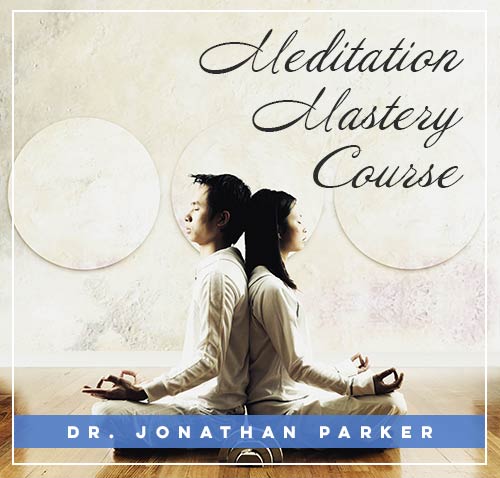Yoga vs. Meditation: Key Differences

Before diving in, please note: This post is for informational purposes only. If you’d like to know more about how we approach topics, feel free to check out our friendly Disclaimer Page.
Hey there, amazing readers! 🖐️ Just a quick note: yes, we know there are a lot of ads here. Trust us, we get it—it’s not the prettiest look, but they help us keep this blog alive and kicking. Those pesky little ads cover the costs of all the behind-the-scenes magic, from hosting and tech stuff to creating content we hope you’ll love.
We’re committed to delivering quality posts, and your support (even just sticking around despite the ads) means everything to us. So, bear with us, and thanks for helping us keep the good vibes rolling. Now, on to the fun stuff! 😉
TRANSLATE BUTTON AT THE END OF THE ARTICLE
A Quick Overview
When it comes to wellness practices, both yoga and meditation are highly popular for their numerous benefits on physical and mental health.
While they are often used interchangeably, there are key differences between the two practices.
Yoga focuses on physical movement, breath awareness, and body alignment, while meditation centers on mental stillness, mindfulness, and inner peace.
In this article, we will delve into the distinctions between yoga and meditation, highlighting their unique aspects and benefits.
Yoga vs. Meditation: Key Differences
Physical vs. Mental Focus
Yoga primarily involves physical movement and postures to strengthen the body and improve flexibility.
Practitioners flow through sequences of poses that target different muscle groups, promoting physical health and well-being.
On the other hand, meditation is a mental practice that cultivates mindfulness, awareness, and inner calm.
It involves sitting quietly and observing the thoughts and sensations that arise without judgment.
Movement vs. Stillness
One of the key differences between yoga and meditation is the aspect of movement.
In yoga, practitioners flow through a series of postures that require physical exertion and flexibility.
The movement helps to release tension, improve circulation, and build strength.
Conversely, meditation emphasizes stillness and being present in the moment.
It encourages practitioners to quiet the mind and focus on the breath to cultivate inner peace and clarity.
Breath Awareness vs. Mindfulness
Breath awareness is a central component of yoga practice.
Practitioners are encouraged to synchronize movement with breath, creating a meditative flow that enhances focus and relaxation.
On the other hand, mindfulness is a key aspect of meditation.
It involves being fully present in the moment, observing thoughts and sensations without attachment or judgment.
Both practices incorporate breath work, but they serve different purposes in yoga and meditation.
Flexibility vs. Inner Peace
Yoga is known for its ability to improve flexibility and strength in the body.
By moving through different postures, practitioners can increase their range of motion, alleviate stiffness, and prevent injuries.
In contrast, meditation aims to cultivate inner peace and emotional well-being.
It helps individuals develop a sense of calm, reduce stress, and enhance mental clarity.
While yoga focuses on the physical aspects of health, meditation delves into the emotional and mental realms.
Body Alignment vs. Mental Clarity
In yoga, body alignment is crucial to ensure proper form and prevent injuries.
Practitioners are guided to align their bodies correctly in each posture, promoting balance, stability, and strength.
On the other hand, meditation focuses on mental clarity and emotional balance.
By observing thoughts and emotions without attachment, individuals can cultivate a sense of inner peace and psychological well-being.
Postures vs. Sitting Positions
Yoga involves a variety of postures that target different areas of the body, such as standing poses, seated poses, twists, and inversions.
Each posture has specific benefits for physical health and overall well-being.
In contrast, meditation typically involves sitting positions, such as cross-legged on the floor or sitting in a chair.
The focus is on finding a comfortable position that allows for deep relaxation and mental clarity.
External vs. Internal Awareness
Yoga encourages practitioners to be aware of their external surroundings, such as the alignment of their bodies, the placement of their hands and feet, and the quality of their breath.
This external awareness helps individuals stay present and focused during practice.
On the other hand, meditation directs attention inward, towards the thoughts, emotions, and sensations that arise in the mind.
It cultivates self-awareness and introspection.
Health Benefits vs. Psychological Benefits
While both yoga and meditation offer a wide range of benefits for overall well-being, they target different aspects of health.
Yoga is known for its physical benefits, such as improved flexibility, strength, and balance.
It can also help alleviate physical ailments like back pain, arthritis, and migraines.
Meditation, on the other hand, focuses on psychological benefits, such as reduced stress, anxiety, and depression.
It promotes emotional resilience, mental clarity, and inner peace.
Exercise Routine vs. Spiritual Practice
Yoga is often viewed as an exercise routine that offers physical benefits for the body.
It is practiced to improve fitness, flexibility, and strength.
While yoga can have spiritual elements, such as connecting mind, body, and spirit, it is primarily a physical practice.
On the other hand, meditation is considered a spiritual practice that focuses on inner growth, self-discovery, and enlightenment.
It delves into the depths of the mind and soul to uncover deeper truths and wisdom.
Defined Practice vs. Open Practice
Yoga typically follows a structured sequence of postures or flows that are designed to enhance specific aspects of physical health.
Each yoga practice may have a particular focus, such as strength, flexibility, balance, or relaxation.
In contrast, meditation is an open practice that can take many forms, such as mindfulness meditation, loving-kindness meditation, or body scan meditation.
Practitioners can choose the type of meditation that resonates with them and adapt their practice to suit their needs.
Yoga Mats vs. Meditation Cushions
In yoga, practitioners use yoga mats to provide cushioning and support during postures and movements.
Yoga mats help prevent slipping, provide traction, and create a comfortable surface for practice.
On the other hand, meditation cushions or pillows are used to support the body during sitting positions.
They help elevate the hips, align the spine, and relieve pressure on the knees and ankles.
Meditation cushions promote proper posture and comfort during meditation practice.
Conclusion
In conclusion, yoga and meditation are distinct practices that offer unique benefits for physical and mental well-being.
While yoga focuses on physical movement, breath awareness, and body alignment, meditation centers on mental stillness, mindfulness, and inner peace.
By understanding the differences between yoga and meditation, individuals can choose the practice that best suits their needs and goals.
Whether seeking physical fitness, emotional balance, or spiritual growth, both yoga and meditation offer valuable tools for cultivating health and happiness.

The Enlightenment Journey is a remarkable collection of writings authored by a distinguished group of experts in the fields of spirituality, new age, and esoteric knowledge.
This anthology features a diverse assembly of well-experienced authors who bring their profound insights and credible perspectives to the forefront.
Each contributor possesses a wealth of knowledge and wisdom, making them authorities in their respective domains.
Together, they offer readers a transformative journey into the realms of spiritual growth, self-discovery, and esoteric enlightenment.
The Enlightenment Journey is a testament to the collective expertise of these luminaries, providing readers with a rich tapestry of ideas and information to illuminate their spiritual path.
Our Diverse Expertise 🌟
While our primary focus is on spirituality and esotericism, we are equally passionate about exploring a wide range of other topics and niches 🌍📚. Our experienced team is dedicated to delivering high-quality, informative content across various subjects ✨.
To ensure we provide the most accurate and valuable insights, we collaborate with trusted experts in their respective domains 🧑🏫👩🏫. This allows us to offer well-rounded perspectives and knowledge to our readers.
Our blog originally focused on spirituality and metaphysics, but we’ve since expanded to cover a wide range of niches. Don’t worry—we continue to publish a lot of articles on spirituality! Frequently visit our blog to explore our diverse content and stay tuned for more insightful reads.






